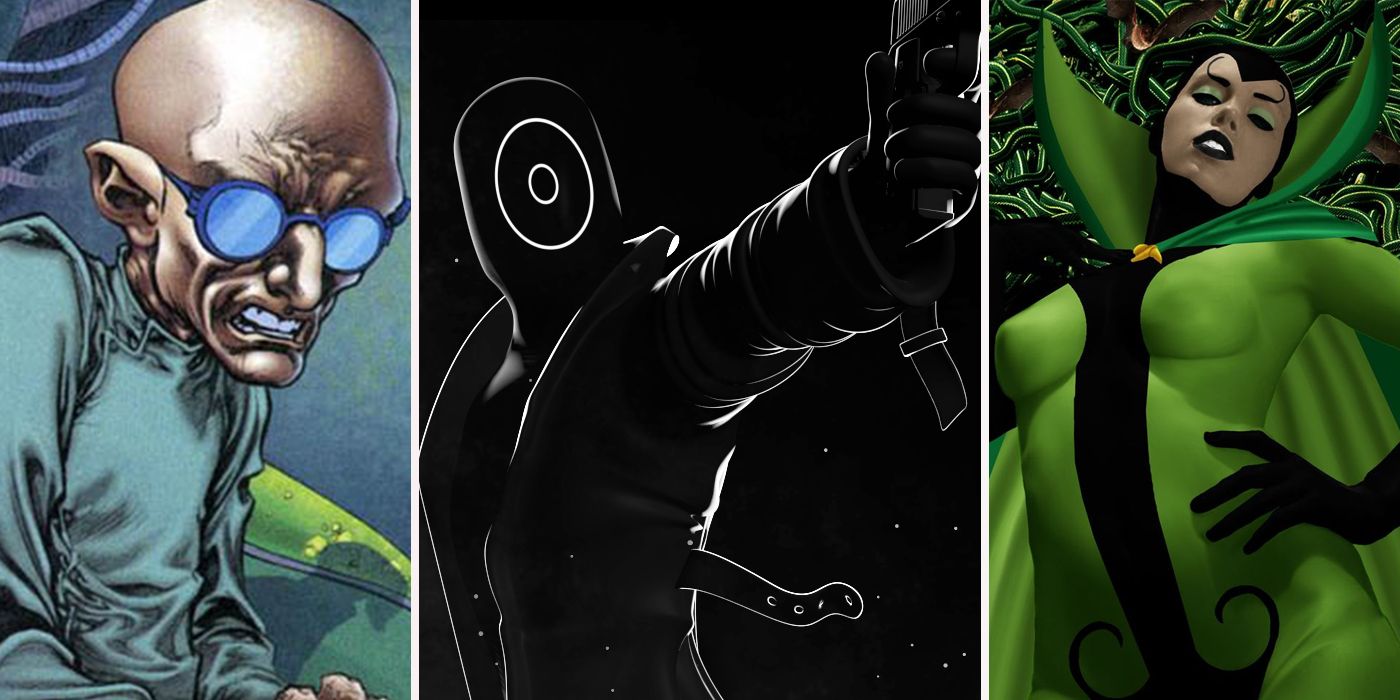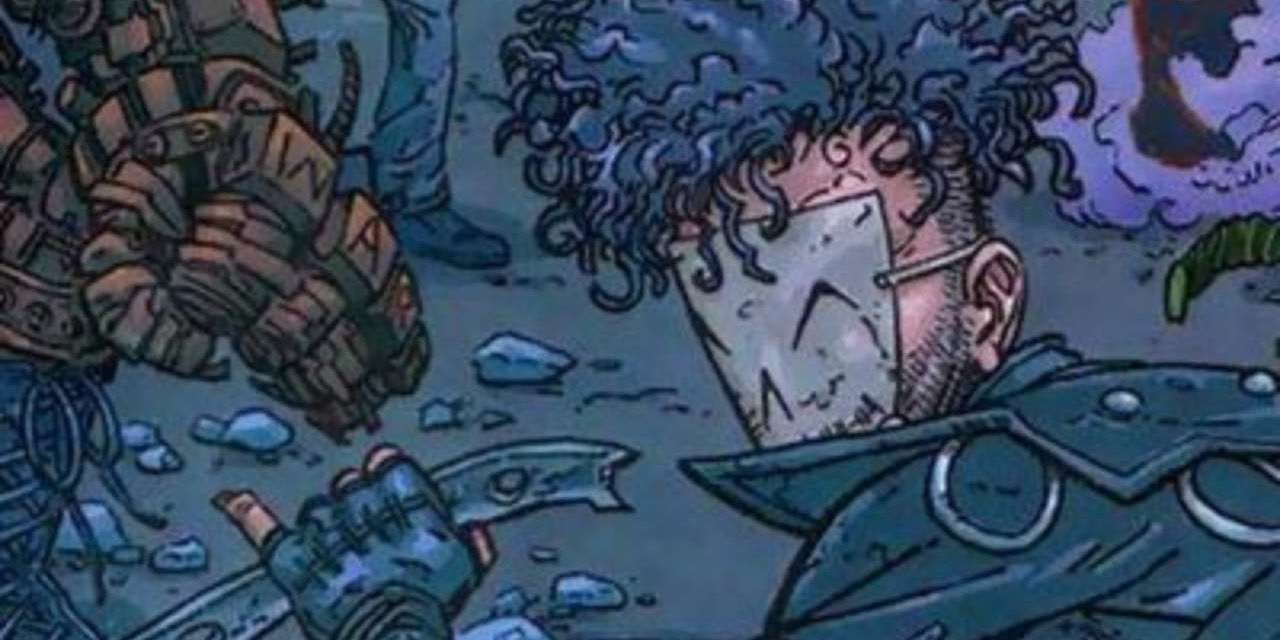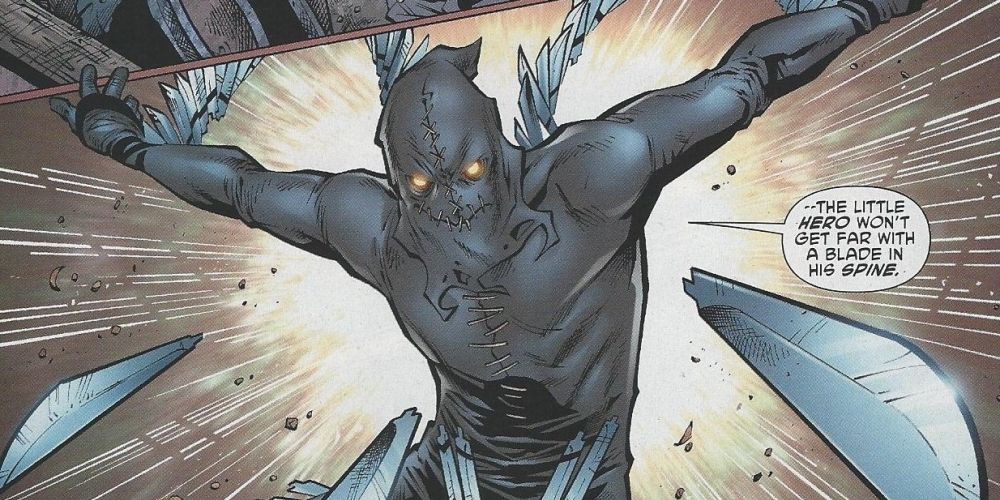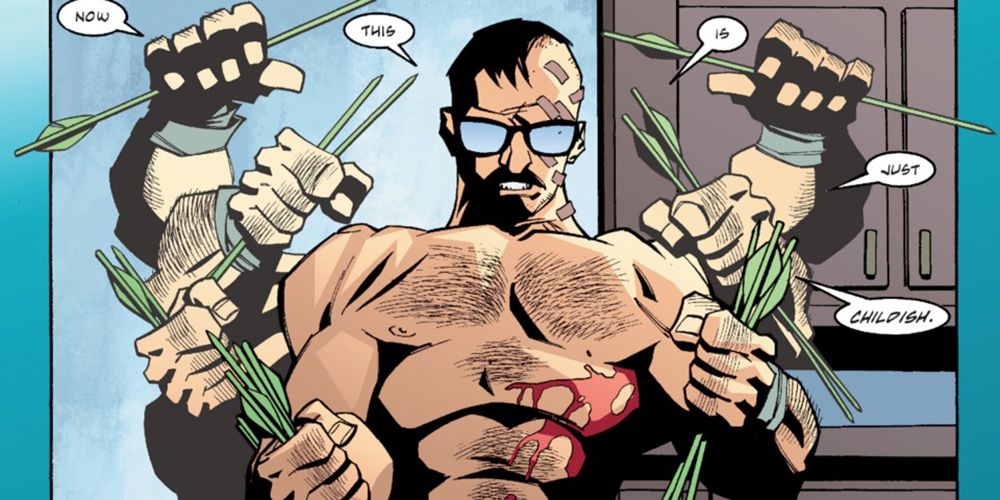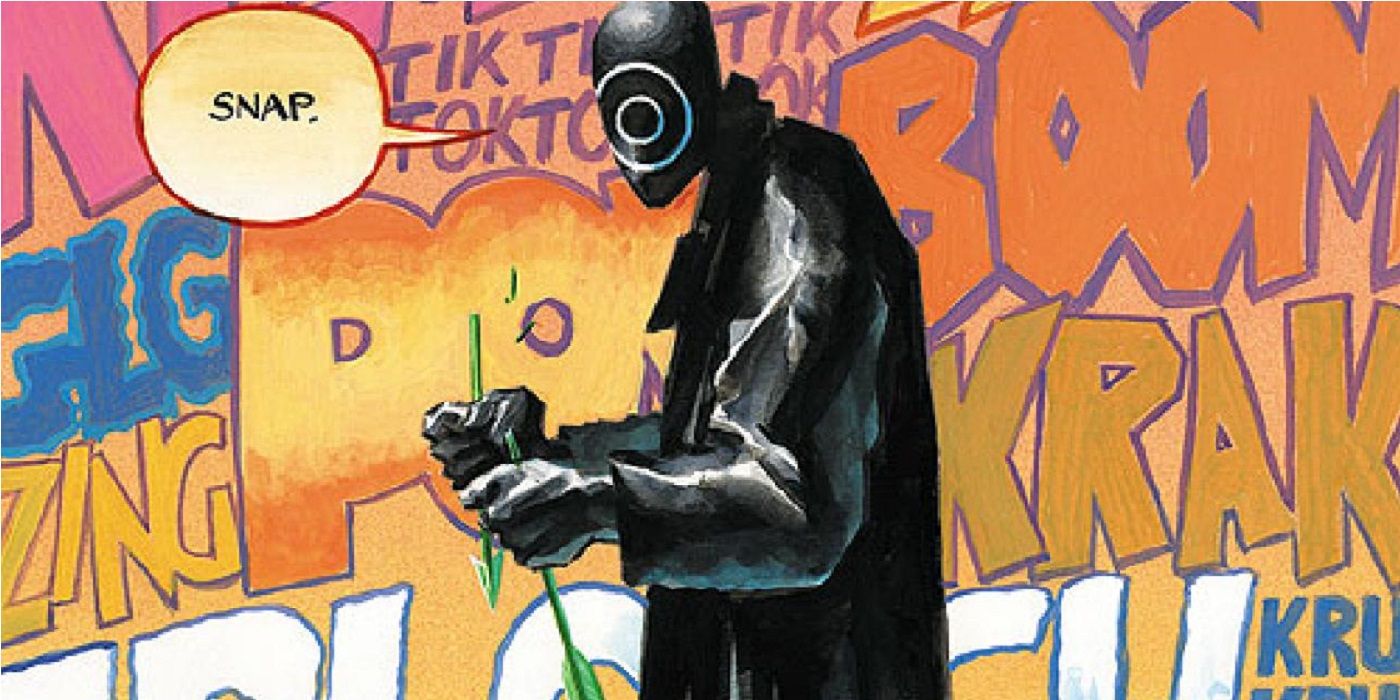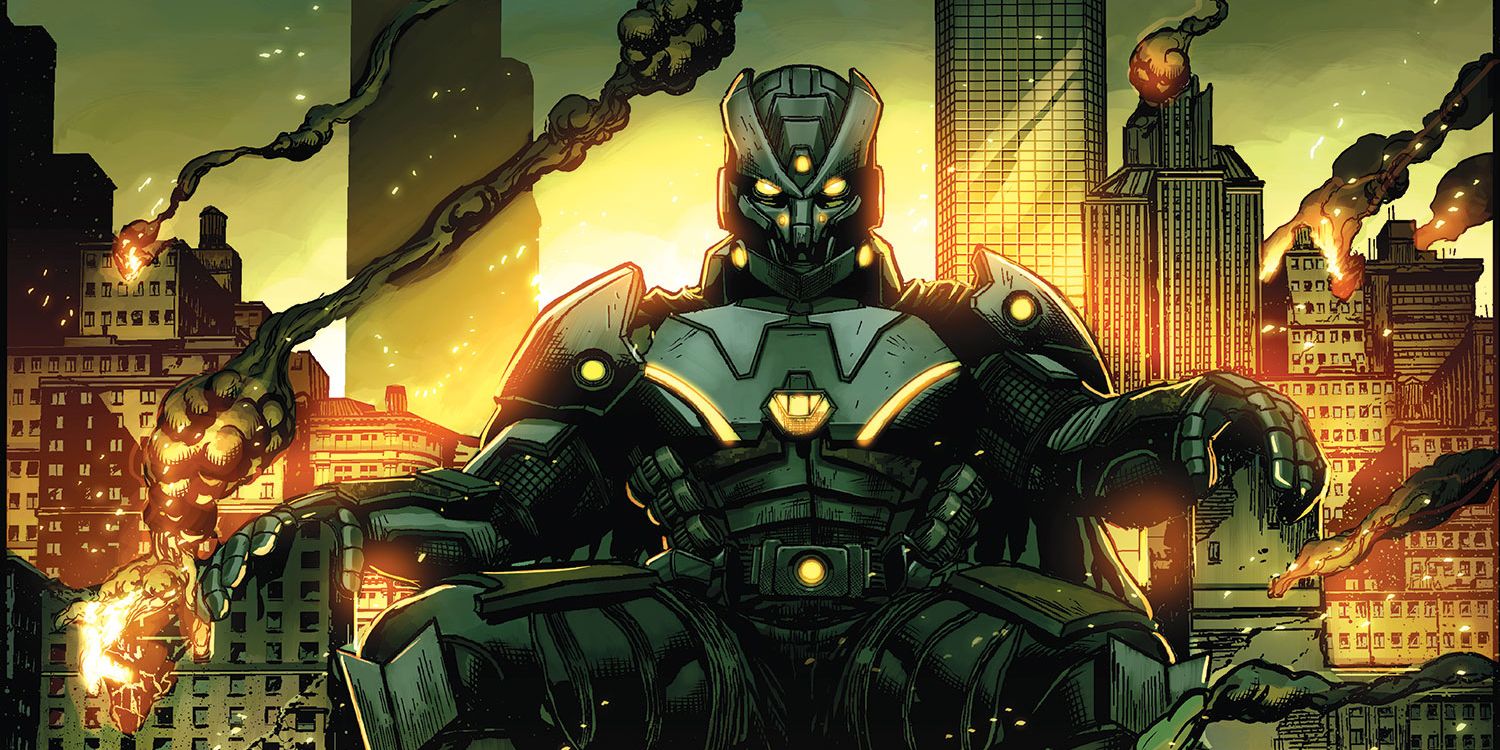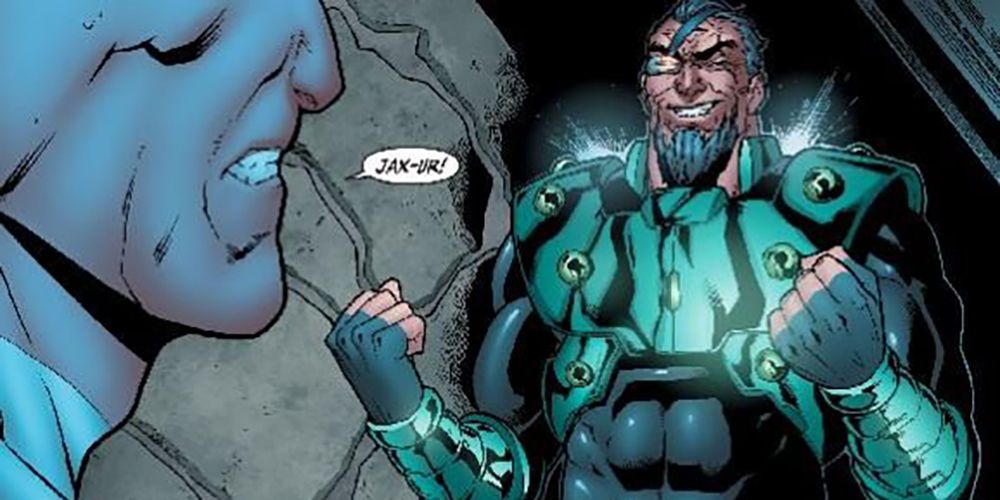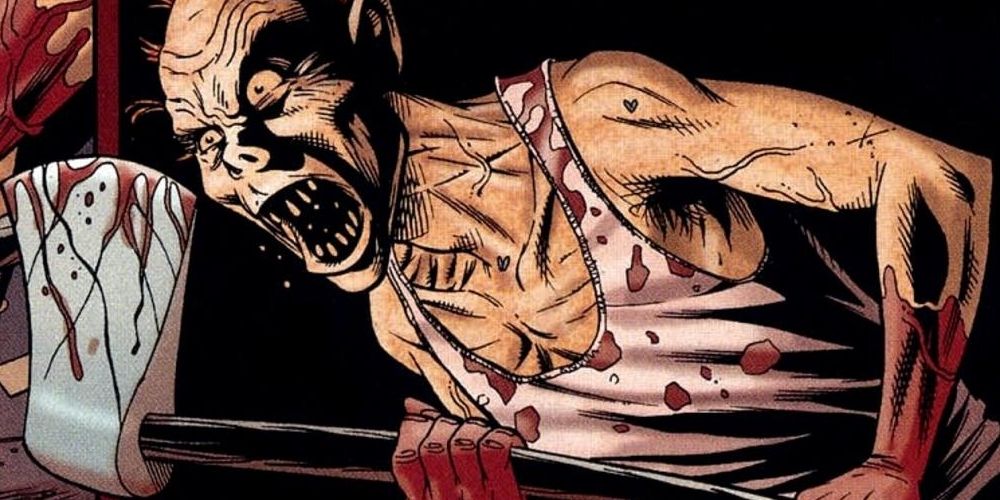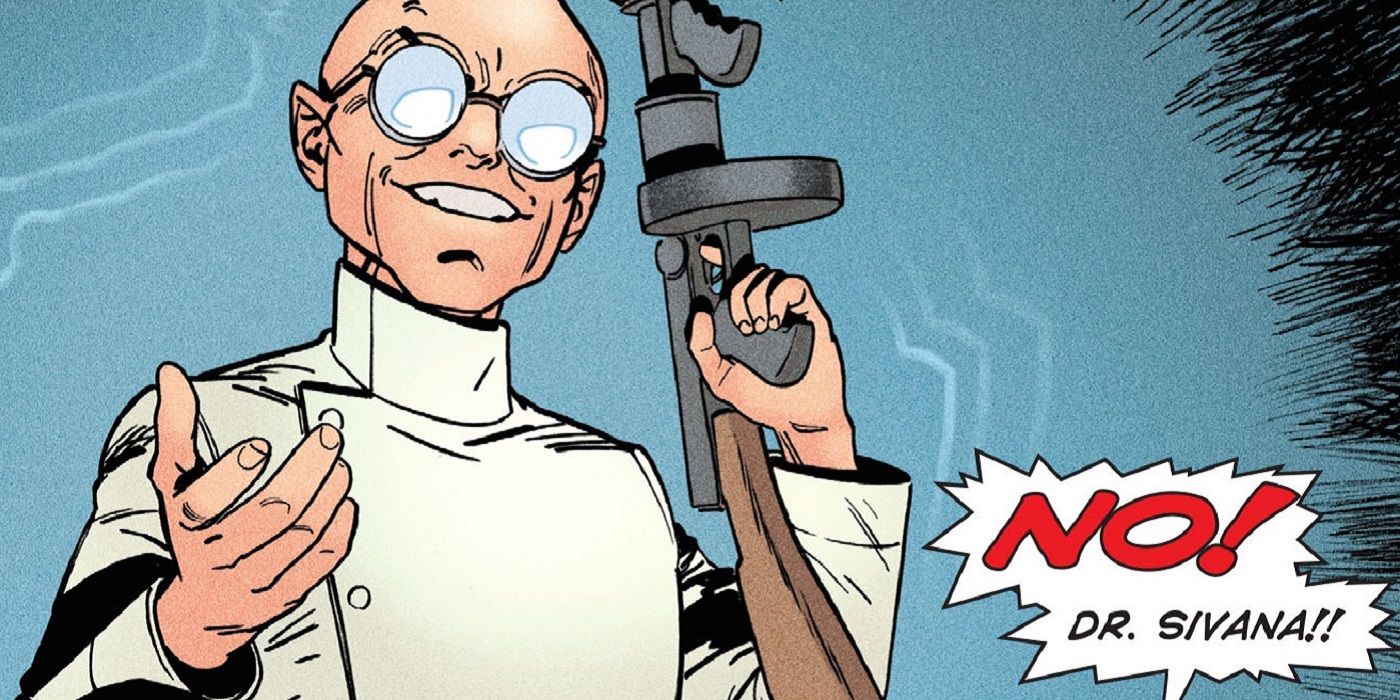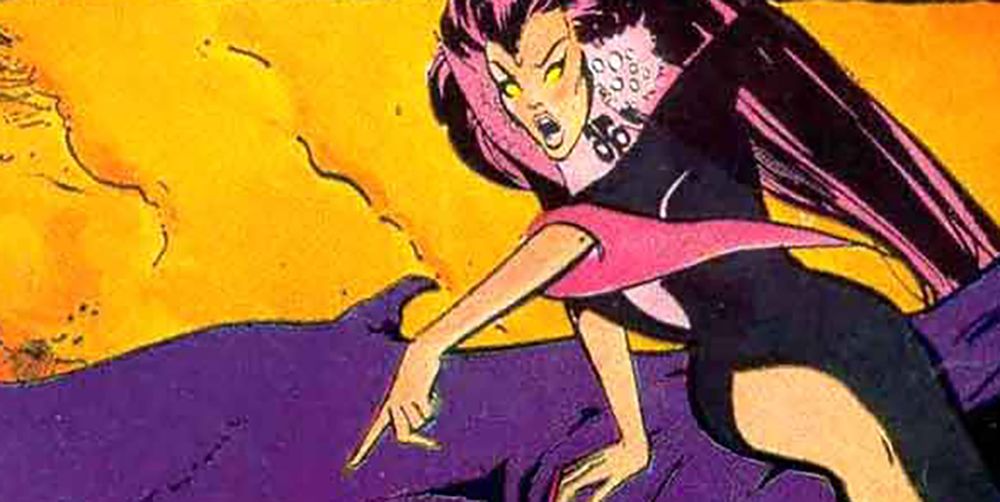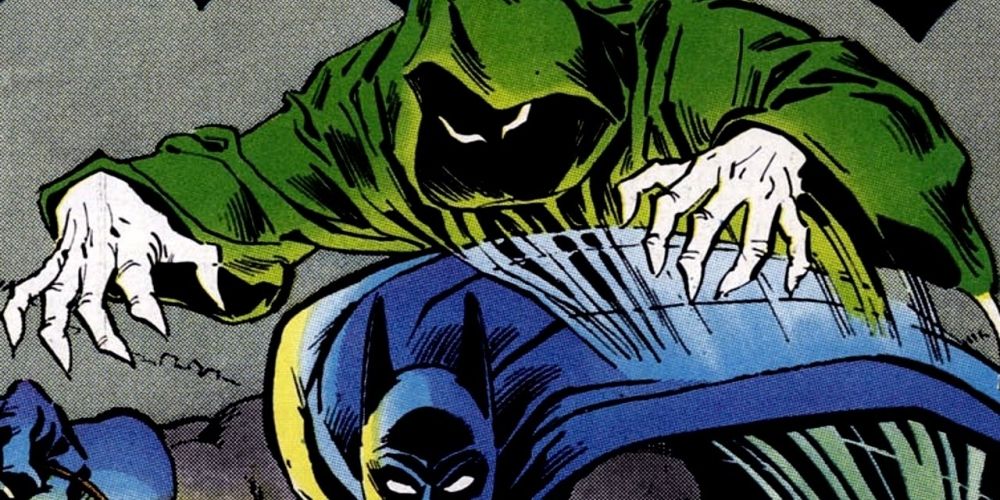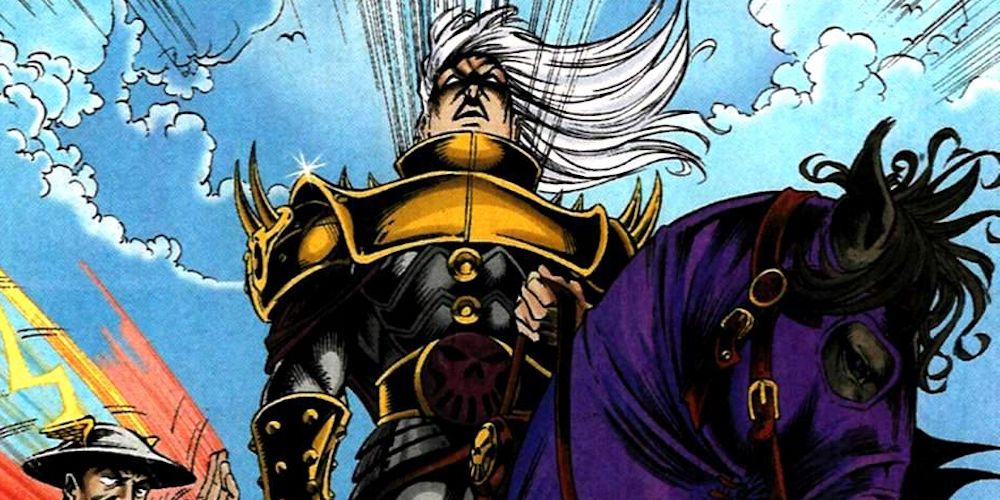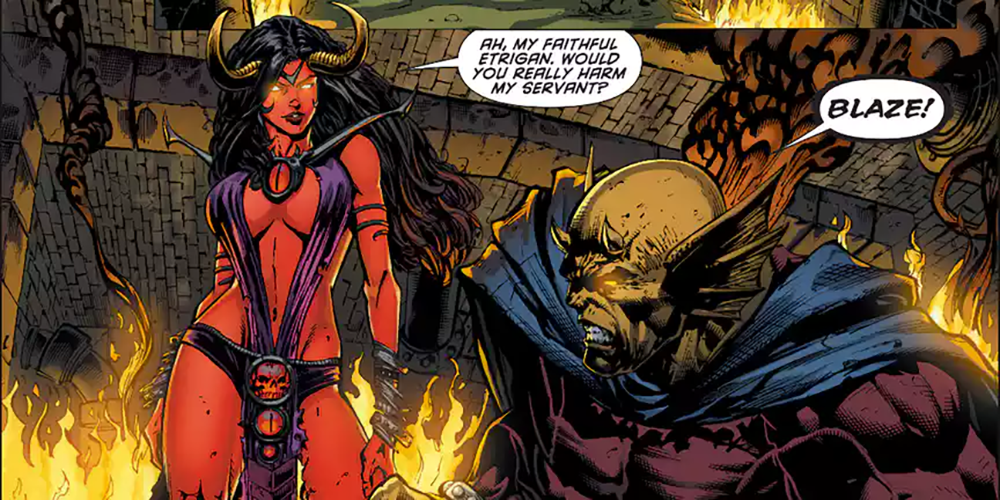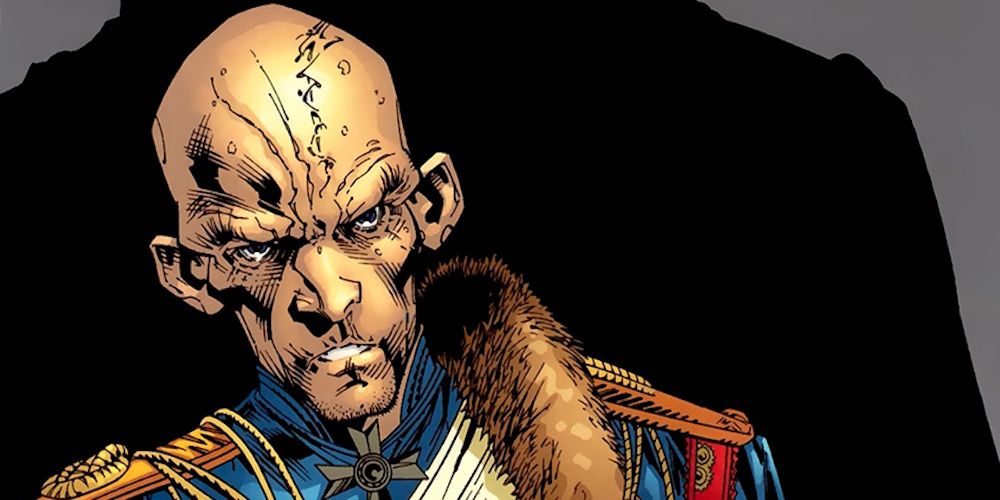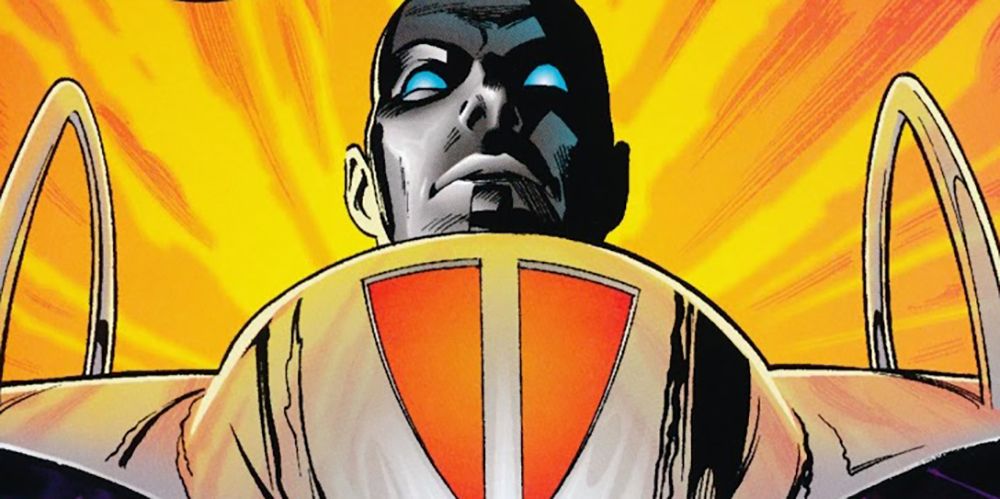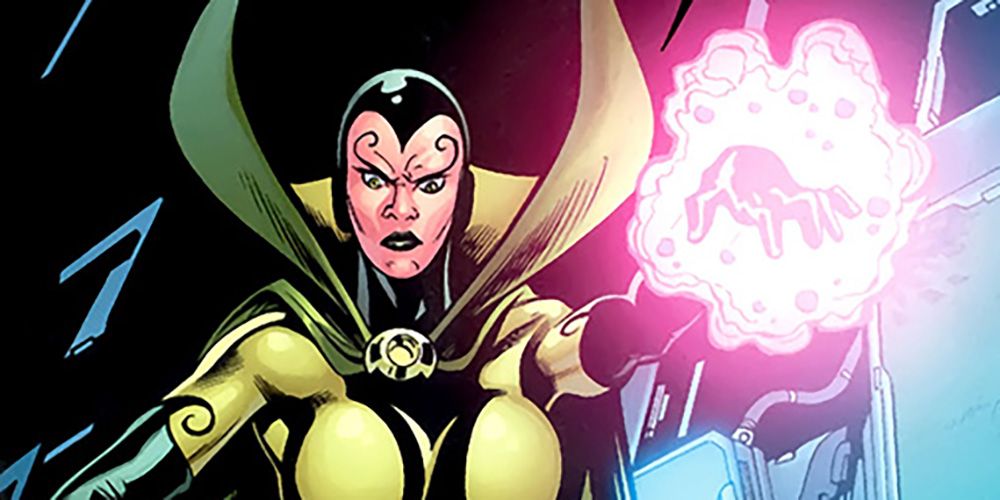There exists a multitude of villains that are synonymous with the DC mythos. Such supervillains include Joker, Doomsday, Riddler, Sinestro, the Reverse-Flash, Black Manta and countless more. These are the bad guys who make the good guys all the more fun to read about, watch and so on. Villains of this caliber, and even those not directly considered A-list (Hugo Strange, Cheetah, Music Meister, etc.), have maintained their status at the forefront of DC narratives across various forms of media for years. They can be found in nearly every reboot of the canon, exerting their power in the most nefarious of ways before ultimately being defeated. Some villains, though, very rarely receive similar opportunities. Some villains hardly receive any opportunity at all to rise to a new level of greatness, as they are seldom utilized.
RELATED: Forever Awful: The 15 Absolute Worst DC Villains Of The ’00s
In the following list, we are going shed a spotlight on a number of the DC Universe’s most unappreciated enemies. Of the foes that will be mentioned, a few have not been seen in quite a while. Despite recently appearing in one storyline are another, others make the list because their occurrence in a particular arc is fleeting or inconsequential. Here are 15 underappreciated DC villains.
15 MURMUR
Murmur (Michael Christian Amar) is relatively new to DC canon, debuting in post-Crisis continuity in The Flash: Iron Heights. Before succumbing to a life of crime, Michael was a talented surgeon. A psychotic break due to schizophrenia causes the character to begin a killing spree in which he incriminates himself. To silence himself, Murmur cuts out his tongue and sews his mouth shut.
Murmur’s madness ceases to end, even after Flash locks him away. His death penalty sentence is essentially made null, since his unusual blood type is unaffected by chemicals used for lethal injection. Using this conundrum to his advantage, Murmur synthesizes a virus made from his blood that’s instrumental to his escape. He receives mention in a newspaper during Flash: Rebirth (2009) and is a villain-of-the-week during Arrow Season 4. Simply put, there’s so much more that could be done with this character.
14 BRUTALE
Guillermo Barrera/Brutale is better known for throwing down with Nightwing in DC’s post-Crisis years. However, the villain’s single New 52 appearance pits him against Jaime Reyes’ Blue Beetle. The encounter results in Brutale and his allies’ receiving serious wounds, but ultimately surviving the blows from Jaime.
Brutale is one of DC’s more interesting assassins by virtue of his origins alone. In both post-Crisis and New 52 continuities, he’s a former interrogator who’d been employed by a clandestine police force under the Latin nation Hasaragua’s government. Barrera’s grisly torture practices forced him into hiding after the government was overthrown. After arriving in the States, Barrera takes on the role of assassin Brutale, putting his deadly tactics to use once more. It’s a shame he gets so little play, especially considering how quickly he was killed in Arrow’s first season. He would’ve made for a fascinating recurring villain.
13 CONSTANTINE DRAKON
Constantine Drakon is another villain that met his end not long after debuting in Arrow season one. In the comics, Drakon hasn’t been around since the "One Year Later" storyline following the events of Infinite Crisis. The character, along with ally Slade Wilson, very much lived to tell the tale of his final run in with the Emerald Archer. For some reason, however, he was never given the opportunity to actually do so.
An impressively skilled martial artist, Constantine Drakon became proficient at killing early in his youth. Shrewdly turning his talents into a profession, he became an assassin. A job in Star City landed him in the Green Arrow’s crosshairs, culminating in a battle the villain won deftly. As previously noted, Drakon’s defeat would come at a later time and on multiple occasions. The real tragedy is that DC hasn’t put him to good use in a while.
12 ONOMATOPOEIA
Onomatopoeia’s reign of terror in the DCU is short-lived. First appearing in the Kevin Smith-scripted “Feast and Fowl” Green Arrow arc in 2002, the villain is an interesting variety of supervillain. For one, Onomatopoeia lives up to his namesake in every manner imaginable. He is a serial killer that typically targets vigilantes who don’t have superpowers, and the only sounds he makes are to imitate the noises around him. At the character’s core is a level of silliness that’s difficult to ignore. However, it’s what makes him most appealing.
Unfortunately, the villain hasn’t appeared in any capacity since another work of Kevin Smith’s, Batman: The Widening Gyre (2010). Smith himself has been advocating for the character’s inclusion on The CW’s Arrow. Thus far, though, it doesn’t seem as if Onomatopoeia will make his jump to live-action anytime soon.
11 WRATH
With a few retcons under his belt and protege turning him into a legacy character, Wrath hasn’t been subjected to relative obscurity without putting up a fight. Considered an anti-Batman, pre-Crisis Wrath is an unnamed murderer who kills cops to exact revenge for what he believes was the wrongful death of his parents. Mimicking Batman’s dress, discovering his identity and using said discovery against the vigilante are traits of the original Wrath before his accidental death.
Wrath’s protege, Elliot Caldwell, adopts the mantle, and the unfortunate circumstances of his childhood are explored before he’s sentenced to prison. As the New 52 iteration, Caldwell takes Wrath in a disparate direction, wherein he’s a murderous, army-building CEO. He, too, ends up imprisoned, and has seldom been heard from. Wrath as an idea seems absurd; yet, the anti-Batman angle could always be recycled for something less sinister.
10 JAX-UR
Aside from his role in Man of Steel, Jax-Ur has not been featured in any serious capacity since the post-Crisis continuity. He was presumably never killed. "Flashpoint" changed everything; therefore, it isn’t surprising the character has not received further in-depth exploration. As a Kryptonian involved in numerous science-related crimes before the planet’s destruction, Jax-Ur is usually imprisoned in the Phantom Zone, regardless of the medium in which the character’s portrayed.
Of course, only so much can be narratively accomplished where his character is concerned; however, DC always finds a way to get the most out of General Zod. In Superman: The Animated Series, Jax-Ur essentially is a Zod-like character, as the General himself never appears. Should the same be done elsewhere? Probably not, but creative liberties taken in a different direction could one day elevate Jax-Ur into a league of his own.
9 CORNELIUS STIRK
At the outset, Cornelius Stirk seems like a Scooby-Doo villain left on the cutting room floor because the depiction was too dark for children. His unusual powers allow him to project an image of himself that he prefers others to see; this is typically done to induce fear… he’s a serial killer, after all. After his victims have been properly subjected to fear, he removes their hearts and proceeds to eat the organ.
Cornelius Stirk comes and goes, rarely appearing in anything other than a cameo role. Stirk’s most recent appearance was in Rebirth’s Red Hood and the Outlaws, where his attempt to use his illusion abilities results in instant defeat. Will this character ever be used for anything besides a villain-of-the-week equivalent? It’s hard to say. But we’re willing to contend Stirk would be worth the extra effort.
8 DOCTOR THADDEUS SIVANA
Thaddeus Sivana is a doctor of genius intelligence, who once held the distinct honor of being one of Captain Marvel’s (Shazam) more popular recurring villains. That, however, was in the Golden Age; recently, the character has garnered limited attention. Since he’s a villain as old as any other currently residing in the DCU (he debuted in Whiz Comics in the '40s), the doctor’s recently taking a back seat does not warrant too much criticism. It is unfortunate, though.
Sivana’s post-Crisis origins portray him as somewhat of a Lex Luthor-like figure, but his reintroduction in the New 52 has the doctor relying on science and magic in an effort to save his family. This reliance leads him to the tomb of Black Adam, where he suffers an injury that allows him to see magic. Sadly, this, and his connection to Mister Mind, is minimally explored afterwards.
7 TALA
There are a number of reasons as to why the demoness Tala is deserving of more time to shine in the comics. Chief among these reasons are her unwavering persistence and her once summoning the Four Horsemen of the Apocalypse… that’s not power you see on display everyday, comics or not. As a result of her countless attempts to take over the world or unleash Hell on Earth, Tala often has strenuous encounters with her main nemesis, the ever mysterious Phantom Stranger.
Other than appearances in animated adaptations such as Justice League Unlimited, Tala has been an absentee supervillain since the post-Crisis continuity. Is her absence readily felt? No, not necessarily, but the seductress’ addition opposite our heroes in Rebirth could make for an awesome storyline or two.
6 THE SPOOK
Val Kaliban/The Spook is definitely a product of the 1970s, bearing a resemblance to some of Scooby-Doo’s finer foes. However, this villain is more intricately characterized compared to the Mystery Inc. gang’s usual suspects. For a while, The Spook was a recurring foe for the Caped Crusader. As a master escape artist and someone who’d design ways in which to break out of prisons (knowledge he used in breaking out criminals for a fee), he proved quite a formidable challenge.
After his ‘70s arc culminated in his execution in the electric chair, the ‘90s brought Kaliban back -- he’d faked his death, using a convincing body double. In 2006’s Batman #657, he appeared once again. This time, his fate was seemingly sealed as Damian Wayne beheaded him. The Spook’s death looked legitimate, but how long before he mysteriously reappears?
5 BROTHER GRIMM
Created by Geoff Johns and Angel Unzueta, Brother Grimm, debuted in an issue of The Flash (2000). A sorcerer and son of a king from an alternate reality, Grimm discovers his father’s plan to invade Earth and forewarns The Flash. With the invasion thwarted and his father’s rule superseded, Grimm declines the crown that’s rightfully his, following Kid Flash’s counsel about doing what’s best for himself. Of course, Kid Flash’s words spell doom once Grimm learns of Kid Flash adopting Flash’s mantle.
Afterwards, Grimm becomes an enemy of the Speedster, working with other Rogues before eventually being defeated. Grimm presents an interesting challenge to The Flash, using magic to subject people to his rule, including the Rogues at one juncture. Because of his absence since then, he’s likely still alive in his alternate world. It’d be intriguing to see the threat a more modern interpretation of the character could pose.
4 LADY BLAZE
This red demoness is a force to be reckoned with, which is why her absence of late is appalling. Lady Blaze’s debut in the 1990s troubled Metropolis, as she feigned the life of a nightclub owner to take the souls of man. She later became a foe of Billy Batson’s Shazam (Captain Marvel). Once details about her origins were explored, a revelation told of her and her brother, Satanus, being the half-demon children of The Wizard Shazam.
Reign in Hell’s miniseries (2008) sees her and Satanus lead a rebellion in Hell. In 2011’s Batman: The Dark Knight, she teams with the demon Etrigan, much to Jason Blood’s dismay. Lady Blaze’s final appearance is in the New 52, where she’s reintroduced as a prisoner of The Block who’s released courtesy of a battle between Supergirl and Lobo. Again, why isn’t she a more prevalent villain?
3 GENERAL IMMORTUS
General Immortus is one of DC’s many immortal villains. However, unlike mainstays such as Ra’s al Ghul and Vandal Savage, the General seems to have been largely lost to time. Primarily an enemy of the Doom Patrol and Teen Titans, the vast majority of Immortus’ nefarious deeds concern his fight to stay alive. Maintaining immortality is priority number one, which admittedly doesn’t make for the most fascinating foe. Yet, the character has plenty of potential, if only he’d be given a chance.
He was last seen alive during the events of Final Crisis (2008/2009), using Professor Milo to surgically implant non-powered people with artificial abilities. Immortus’ few appearances in Teen Titans and Teen Titans Go! animated series also offer little in the way of compelling character development. But that doesn’t mean hope for his potential reintroduction should be lost; surely, someone will find a use for him.
2 DOMINUS (TUONI)
Originally one of the Lords of Order, bearing the name Tuoni, the supervillain Dominus was driven mad because of jealousy for his lover, Ahti, who rose in rank before him. To undermine Ahti’s ascendancy, Tuoni attempted to steal the power she’d acquired. As punishment, he was imprisoned in the Phantom Zone. Following a series of fortunate events, the newly fangled villain escaped the Phantom Zone with cosmic abilities.
A fight with the Man of Steel results in Dominus assuming the role of Superman; soon thereafter, though, the hero is freed from captivity. This villain is especially intriguing because of his and Superman’s final battle, which involves the two duking it out psychically -- a match ending in Dominus’ return to the Phantom Zone, where he’s presumably been since before Infinite Crisis.
1 PHOBIA
Capable of detecting the fear of others and projecting it onto them with an increased intensity, Angela Hawkins/Phobia makes for a remarkably dangerous foe. Phobia, created by the duo behind Deathstroke, Marv Wolfman and George Pérez, was instantly compelling upon her introduction in New Teen Titans #14 (1981). As her physic abilities begin to develop, her parents send her away. Before long, she becomes a recruit for the Brotherhood of Evil, which often puts her at odds with the Teen Titans.
The Brotherhood is essentially Phobia’s adopted family, quelling her own fears of being alone. Phobia makes scattered appearances during the post-Crisis years, including a minor role in Salvation Run’s limited series and having a brief run-in with Jamie Reyes in the New 52. Her ability to manipulate with fear isn’t exactly groundbreaking; however, Angela’s personal relation to fear is worthy of further exploration.
Which of these villains do you want back in the DCU? Let us know in the comments!

